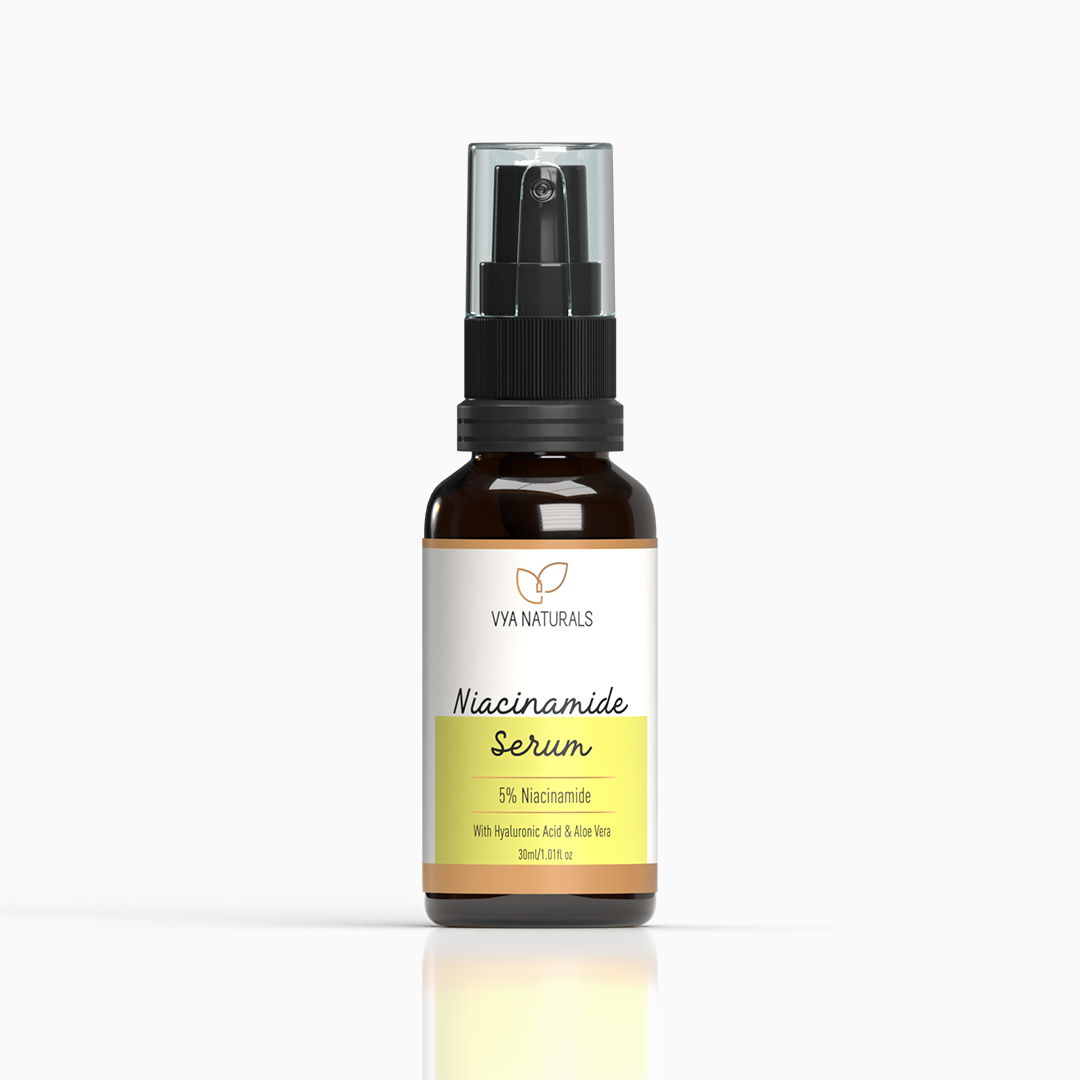WHAT IS GLASS SKIN?
Glass skin is a skincare term that first originated in Korea. It is now popularly used all over the world. It describes skin that is happy, healthy, glowing - skin so clear that it almost looks like translucent and glass like. It’s an elegant way of describing an enviable complexion.
The Korean approach to glass skin depends a lot on hydration as well as on well nourished skin. If you have clear, smooth skin with plenty of moisture trapped in the cells your skin will look plumped up and young, with a luster that catches and reflects light.
WHAT ARE THE 4 SIGNS OF GLASS SKIN?
Glass skin or good skin can be described using these characteristics
- SKIN TEXTURE: Glass skin has a smooth even texture without any visible pores or bumps or scars or pits on the skin. Skin should not be dry or flaky either.
- SKIN TONE: Regardless of the colour of your skin, glass skin has an even wash of colour throughout the face. There should be no signs of pigmentation or post acne scarring or redness or rosacea on the face.
- SHEEN OR SHINE: Glass skin has a natural shine or glow to it. This happens when your skin has the right balance of oil and hydration. Your skin produces a natural oil called sebum. If your skin produces too much sebum your face will look slick and oily. If your skin does not produce sufficient quantity of sebum your skin will be dry and rough and prone to flakiness.
- GOOD BLOOD CIRCULATION: Skin with good blood circulation will have a rosy, lit from within glow to it. We are not referring to reddened skin which is a sign of rosacea. Your skin should also not be so devoid of colour that it begins to look ashy or dull.
BUT LET’S GET REAL!
Who among us can claim to have that kind of skin naturally?
There’s always makeup to make us look like we have flawless complexions with impossibly smooth and lustrous skin. But this blog is all about skincare and not about makeup.
So - is there something that we can do from a skincare point of view to get really beautiful skin?
The good news is that yes there is!
Good skin comes from good skincare, consistent skincare combined with a healthy lifestyle - this includes balanced diet, sufficient hydration, exercise, sleep, sun protection and a positive frame of mind.
HOW TO ACHIEVE GLASS SKIN
There is no shortcut to achieving good skin. If you are looking to get closer to the ideal glass skin you need to be committed to a consistent skincare regime.
Another word of advice - instead of trying out every new skincare fad or trend out there, it is better to focus on understanding your skin and on using well-formulated products. It is also best to have achievable skincare goals and realistic expectations.
Build a skincare routine that helps you achieve the best skin possible, and most importantly, helps you stay comfortable and happy in your own skin.
Of all the skincare routines and processes that exist, we think that CLEANSING AND EXFOLIATION are two of the most important things to truly master. So let’s look at both these steps in greater detail.
CLEANSING - THE ROLE IT PLAYS IN ACHIEVING GLASS SKIN
At first glance cleansing seems like a no brainer. It is one of the most basic things we do on a daily basis. Proper cleansing is an essential first step in getting skin to look fresh and to feel great. Some of us still get this step wrong.
Here are some common mistakes:
- Not washing your face in the evening. Going to bed without removing the dirt, sweat, pollution, sunscreen, makeup etc that your skin has borne throughout the day is a sure reason for your skin getting clogged, breaking out and overall looking unhealthy. Make sure you thoroughly cleanse your face as part of your evening/ night time skincare regime. This creates the perfect canvas for the rest of your skincare routine.
- Not washing your face in the morning. This is a common mistake if you have normal or dry skin. Your morning cleanse can be a lighter cleanse if you wish, but skipping it is not a good idea. Gently cleansing your face in the morning removes any remnants of retinoids, acids or any such similar products that may have formed your evening routine. Your skin also accumulates bacteria (from your pillow and bed linen) as well as toxins during the night, so cleansing in the morning is always a good idea.
- Overwashing your face. If you have oily skin you may be guilty of washing your face more than twice a day. You may find that your skin gets oily at midday or a few hours after cleansing. This tempts you to once again wash it to get the oil off your skin. The recurring oiliness typically happens because you use too harsh a cleanser which strips the skin of all its natural oils. Your skin then tries to compensate by sending even more oil to the surface to compensate for this.
- Using the wrong cleanser. Choose a cleanser based on your skin type. A cleanser developed to remove excess oil will leave normal or dry skin feeling dehydrated and stretched. A gentle milky cleanser will not be strong enough for skin that produces excess sebum.
Here’s a blog on overcleansing and common cleansing mistakes that you might find interesting.
BENEFITS OF CLEANSING
Here are 3 reasons why you should cleanse your skin.
- Cleansing removes dirt and impurities. This is probably the most important reason to cleanse. If you leave impurities on your face these will get clogged in your pores and lead to breakouts and acne, dryness and dull looking skin.
- Cleansing helps prep your skin. Dirty skin cannot absorb skin care products as efficiently as can clean skin. Clean skin is like a sponge. It absorbs hydration, moisture and antioxidants from your toner, serum, essence and moisturiser. This helps in keeping hydration levels of your skin at optimal levels.
- Cleansing keeps your skin clear and bright. Your night cleanse ensures that your skincare can penetrate effectively into your skin. Skin repairs and regenerates itself at night.
HOW TO CHOOSE THE RIGHT CLEANSER
- If you have oily skin that is prone to congestion, blocked pores and pimples look for a cleanser that removes excess oil produced by your skin. Your cleanser must be strong enough to remove excess sebum but should not strip your skin of its natural oils. After rinsing off your cleanser your skin should feel clean but not overly dry. It should still feel supple, moist and nourished. A classic example of this type of cleanser is the Vya Naturals Turmeric & Tea Tree Face Wash
- If you have normal to dry skin use a gel based cleanser that does not foam and gently removes dirt without making you skin feel overly dry. Your cleanser should contain nourishing agents that build the skin’s lipid barrier as well as antioxidants to help fight free radicals. Vya Naturals Vitamin C Cleanser contains grapefruit oil and glycerin as well as vitamin C active to protect your skin. It is a good choice for sensitive skin condition as well.
- Combination skin benefits from the same type of cleanser as those recommended for oily skin. Focus on the oily T zone with this cleanser.
Ingredients play a key role in determining the right cleanser no matter what your skin type may be. A well made cleanser will not contain harsh surfactants, foaming agents, artificial colours or fragrances as these are skin irritants. Vya Naturals products are free of parabens,sulphates, phthalates, artificial fragrances, artificial colour and other harsh chemicals.
EXFOLIATION - THE ROLE IT PLAYS IN ACHIEVING GLASS SKIN
Exfoliation or scrubbing is the removal of dead skin cells from the surface of the skin. Our skin regenerates every few weeks. Dead skin cells accumulate on the surface of the skin causing it to look dry and dull.
THE BENEFITS OF EXFOLIATION
- It unclogs your pores. Dead skin cells get removed along with other debris that may be on the surface of your skin. If left on your skin these eventually end up blocking pores, causing black heads, white heads and eventually acne and breakouts.
- It makes your skincare more effective. Removal that layer of dead skin cells from the skin’s surface means that your serums, lotions, moisturisers etc can more effectively penetrate the layers of your skin. This makes your skin look and feel better.
- It makes your skin appear smoother and more even toned. Exfoliation breaks down and removes dry and dead skin cells including those with sun damage. Your skin’s surface gets smoother and more even toned over time. It also prevents ingrown hairs and keeps your skin looking smooth and healthy.
- It boosts the radiance of your skin. Exfoliation encourages cell turnover. This keeps the new fresh healthy cells on the surface making your skin look radiant and glowing.
HOW TO CHOOSE THE RIGHT (PHYSICAL) EXFOLIANT
Exfoliants can be chemical or physical in nature. Some tools are also designed to be exfoliants for eg Konjac sponges, washcloths, face brushes etc. We are going to focus on physical exfoliants in this section.
- Your exfoliant or scrub should be free of harsh, aggressive particles. These can cause micro tears on the surface of your skin.
- Choose an exfoliant that is free of artificial colour and fragrances so that your skin is not irritated or sensitised.
- Choose an exfoliant that does double duty of mask as well as exfoliation. This means that the scrubs must contain other ingredients that nourish and fortify the skin.
- If you have oily or combination skin Vya Naturals Turmeric Brightening Scrub is an excellent choice. Mix with rose water or regular water to form a paste. Apply a thin layer of this paste all over your face and then scrub off after 8-10 minutes.
- Normal to dry skin types will benefit from using Vya Naturals Rose Balancing Scrub. Mix with milk or yogurt to form a paste. Apply a thin layer of this paste all over your face and then scrub off after 8-10 minutes.
Be careful to not over exfoliate.
- If you have oily or combination skin- you should exfoliate not more than twice or thrice a week.
- Normal to dry skin will benefit from just one exfoliation a week.
IN CONCLUSION - IS GLASS SKIN EASY TO ACHIEVE?
Glass skin is an ideal skin type. However if you really break it down when we strive to achieve glass skin what we are really aiming for is clear, healthy, happy looking skin. Skin type, genetics and the environment all play a big role in how our skin looks.
The key is to be consistent with good skin care practices.
We hope that this was helpful. Wishing you happy and healthy skin days ahead!
Do you have any questions/suggestions? Let us know in the comments below.
Title Photo Credits:
- Photographer: Ivan Knyazev
- Model: Alina






1 comment
Mam, my skin is oily and I have acne too can you plz suggest me how to get rid of oily and acne skin problem,and I don’t have any bad habits, I’m a T-tutor, I want to get a clear skin which is free from acne and oily